Water simulation in Abaqus
The primary component of Earth’s hydrosphere and the fluids of all known living things is water (H2O), an inorganic chemical that is clear, tasteless, odourless, and almost colourless (in which it acts as a solvent). All known kinds of life depend on it. Water Abaqus simulation is fully discussed in this project package.
In industries, it has other applications; it’s used for energy production, manufacturing industry such as hydroforming and cutting, the construction industry, mining and quarrying, etc.
In this package, there are nine practical examples known as workshops presented to you to learn how to simulate water Abaqus. The workshops are: impact analysis on water-filled X65 steel pipes, explosion simulation on metal tube in the depth of water, failure modes of concrete gravity dams simulation subjected to underwater explosion, water mitigation simulation effects on blast wave using Eulerian method, water impact simulation on 3D body using CEL method, ball impact on the water, water sloshing simulation in the concrete tank, hydroforming simulation using SPH method, and water jet cutting simulation.
You can read more details about workshops below.
Workshop-1: Impact Simulation against water-filled X65 steel pipes in ABAQUS
Offshore pipelines frequently experience unintentional impact loads, such as those caused by trawl gear or anchors. Numerous factors, such as the pipe geometry, the composition of the pipeline, the material’s qualities, the impact velocity, etc. This video uses SPH to simulate impacts against water-filled X65 steel pipes using ABAQUS (Smooth Particle Hydrodynamic). This kind of analysis calls for an explicit procedure. The pipe bends during the impact, causing water to spill outside.
Workshop-2: Numerical simulation of CEL explosion over the metal tube in the depth of water in Abaqus
This lesson looks into the numerical simulation of a CEL explosion over a metal tube in the depths of the ocean using Abaqus. The shock wave and bubble pulse are the two phases of an underwater explosion. Despite the fact that both do significant damage to the nearby structure, the damage mechanisms are distinct. In most cases, the shock wave’s pressure is extremely high, but its duration is very brief. The pressure brought on by the bubble pulse, on the other hand, is lower (about 10%–20% that of the shock wave), but it has a much longer duration, producing a force with similar momentum. Therefore, while evaluating a near-field underwater explosion, both the shock wave and the bubble pulse should be taken into account.
The shock wave often only causes minor damage to a ship but does substantial damage to a structure whose natural period is on the order of milliseconds. However, if the frequency approaches the eigenfrequency of the spacecraft, the bubble pulse might whip the ship after an explosion and do general damage. In recent years, there has been a lot of interest in determining how fluid-structure interaction (FSI) affects a structure’s response to blasts. Taylor was one of the pioneers in researching the momentum that an exponentially shaped pressure wave might impart to a freestanding plate. This kind of analysis is ideal for dynamic explicit method. The default property has been chosen as the general contact.
Following detonation, the shock wave spread through the water, causing significant deformation and compaction in the pipe.
Workshop-3: Numerical simulation of failure modes of concrete gravity dams subjected to an underwater explosion in Abaqus
Terrorist bombing assaults or unintentional explosions are posing a serious threat to infrastructure, including significant commercial, military, and civilian infrastructures. This is because of the rising tensions around the world. People’s interest in the research on structures’ anti-knock safety is growing. The bulk of high dams are being built or will be built in order to satisfy the steadily rising demand for power, irrigation, and drinking water. High dams may likely be a target for terrorists given their major political and economic benefits, as their potential collapse could result in a financial catastrophe, a large number of victims, and considerable media attention. Since the terrorist attacks on September 11, there has been a rise in public anxiety over the possibility of bomb assaults against dams. As a result, safeguarding dam structures from blast loads is a crucial part of homeland security. To assess the antiknock safety of concrete gravity dams exposed to underwater explosions, research on the failure modes and antiknock performance is essential. Even though the physical processes that take place when an explosive detonates in water and the shock wave propagation are incredibly complex, the subsequent response of the dam when it is subjected to explosion shock loading is significantly more difficult than it is when it is subjected to static or earthquake loading.
Three-dimensional components were employed in this simulation to model the dam and the river. It is essential to apply an adequate material model to take damage into account in order to determine the optimal behavior for concrete under a high strain rate and significant stress. It has been utilized with a dynamic explicit step and UNDEX method.
The distribution of damage is clear throughout the process, and it may be altered by altering the amount of TNT used or the location of the source point, which serves as the TNT source.
Workshop-4: Numerical simulation of water mitigation effects on blast wave in Abaqus by using the Eulerian method
It has been discovered that building a water wall around an explosive is an efficient way to lessen the impact of the shock wave and blast pressure from an accidental explosion. In essence, the detonation’s high-pressure shock wave forces the water in close proximity to the explosive to change phases and redistribute internal and kinetic energy over the detonation gases, the blast wave, and the barrier material. The water mitigation concept is starting to gain a lot of attention in both defense and commercial applications for the storage of energetic materials due to its efficiency in dampening explosions. An explosion is a phenomenon that happens when energy is suddenly released. The solid explosive typically detonates and then transforms into gaseous products, which initially have extraordinarily high pressures that can surpass 100,000 atmospheres. Pressure waves that propagate into the surrounding medium convert this pressure into mechanical work through momentum transfer. Here, the classic Jones-Wilkins-Lee (JWL) equation of state and a detonation velocity of 6,930 m/s are used to represent the pressure-volume-energy behavior of the TNT detonation product gases.
Every component in this simulation is regarded as a three-dimensional Eulerian component. EOS material model as Us-Up equation was used to simulate water, while JWL material model was utilized to model TNT. This kind of analysis is ideal for dynamic explicit method.
Workshop 5: Numerical simulation on the water impact of 3D body by using CEL method in Abaqus
A significant source of unbounded, clean energy is the ocean’s waves. The wind blowing across the ocean’s surface produces waves. The wind blows consistently and strongly enough to produce waves in many parts of the world. Many different technologies have been put forth to collect the energy of waves, and they differ in how they interact with the waves and how they transform the energy of the waves into other energy sources. A way to convert wave energy into useful electrical energy is offered by wave energy converters. Wave energy converters with small dimensions in relation to incident wave length are point absorbers. They can absorb wave energy from a wave front that exceeds the absorber’s size. The explicit finite element approach combined with a CEL solver is used to examine the hydrodynamic problem of the water impact of three-dimensional buoys. While the structure is discretized using a Lagrangian method, the fluid is solved using an Eulerian formulation. Various three-dimensional structures, including a hemisphere form, are used in this piece. Material behavior has been defined using Us-Up equations for water and the ideal gas formulation for air. Projectile entered the water during analysis, and water splash was seen.
Workshop-6: Simulation ball (filled with air) impact to the water in Abaqus
In this tutorial, the impact of a ball (filled with air) on water has been thoroughly modelled using Abaqus. It has been used to represent a spherical shell element made of hyperelastic material. As a result of the fluid cavity technique, internal pressure, external pressure, and the characteristics of air are modelled. An Eulerian element with the Us-Up equation has been inserted for simulating water. For this kind of analysis, an explicit approach should be used. When the impact ball entered the water, the pressure and volume of the fluid cavity abruptly changed.
Workshop-7: Simulation of water sloshing in the concrete tank under earthquake load in Abaqus
This tutorial shows a simulation of water sloshing in an earthquake-resistant concrete tank. Water is treated as an Eulerian component with the Us-Up equation and the concrete tank is modelled as a three-dimensional shell with elastic material. It is appropriate to use explicit process, and a 55 second time limit has been used. A volume fraction tool has been implemented to determine the original volume of water. Water entered the vessel throughout the analysis, and under the load of an earthquake, sloshing occurred. The tank bottom has experienced horizontal acceleration due to the load modulus.
Workshop-8: Simulation hydroforming process in Abaqus by using SPH method to define fluid
Metals including steel, stainless steel, copper, aluminum, and brass can be shaped using the metal fabrication and forming process known as hydroforming. With the aid of a highly pressurized fluid, metal is formed using this efficient and specialized type of die molding. Hydroforming is often divided into two categories: sheet hydroforming and tube hydroforming. One die and a sheet of metal are used in sheet hydroforming; high pressure water is used to force the blank sheet into the die on one side of the sheet, creating the desired shape. By employing two die halves that hold the raw tube, tube hydroforming is the process of expanding metal tubes into a shape. The earlier method of stamping two part halves and welding them together has been replaced by hydroforming. Additionally, it is utilized to produce parts more quickly by doing away with welding and to design intricate shapes and contours. The ability to preserve high-quality surfaces for finishing and seamless bonding are only a few advantages this approach has over other methods for producing parts. Hydroformed parts are less expensive per unit, lighter, and have a higher stiffness to weight ratio than conventional metal stamped and welded parts. The procedures can also be used to produce components in a single step, saving time, resources, and materials. In this tutorial sheet hydroforming is investigated.
The sheet is made of aluminium, and the condition of water is represented by the Us-Up equation of state. With surface to surface contact, dynamic explicit step has been used. Smooth Particle Hydrodynamic(SPH) is implied in this simulation to represent the behaviour of water. When the punch was simulated moving into the water, the water moved to create a sheet over it and applied tremendous pressure, which caused the sheet to develop immediately.
Workshop-9: Simulation water jet cutting in Abaqus
This tutorial shows how ABAQUS was used to simulate a water jet effect across a thin plate. Us-Up equation has been implemented for material modelling and the SPH approach for modelling water. The plate has an elastic-plastic characteristic and is modelled as a shell element. The ability of the Edit Keyboard to generate a damage model has been utilized to model plate failure during the impact.
I hope you have got enough information about the water Abaqus simulation; if you have any questions about this tutorial, contact us via online chat on the left side of the page.
It would be helpful to see Abaqus Documentation to understand how it would be hard to start an Abaqus simulation without any Abaqus tutorial.
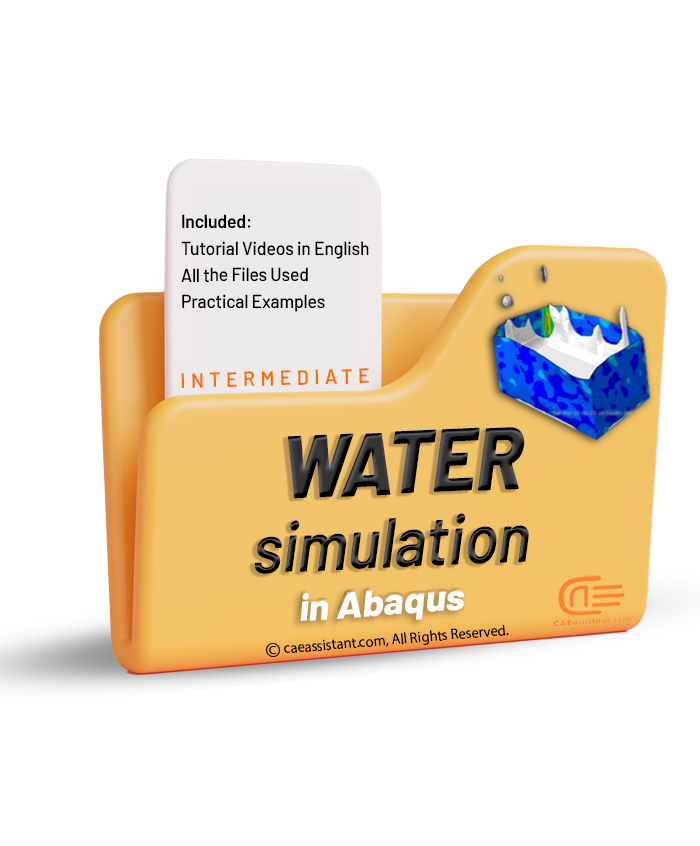
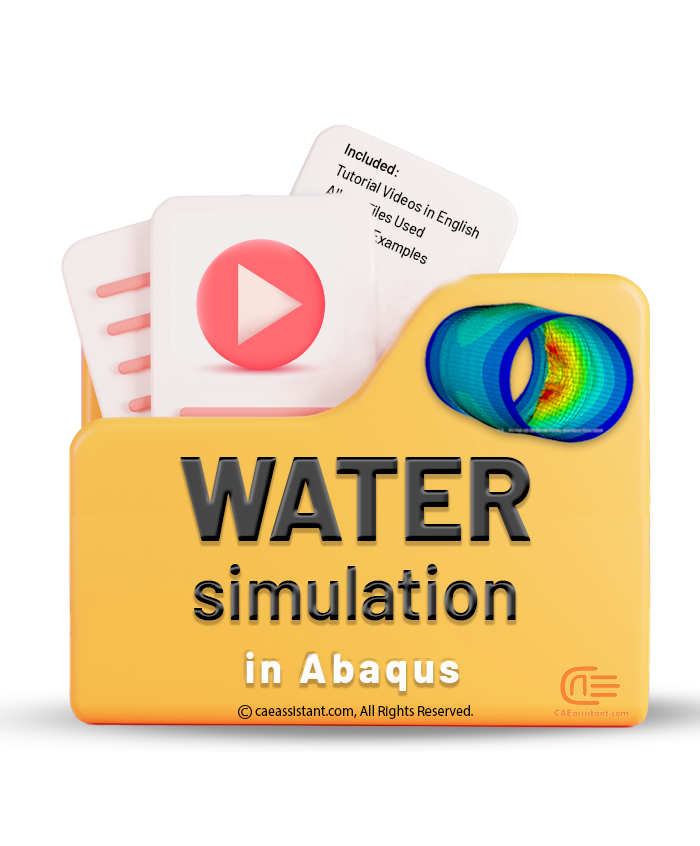
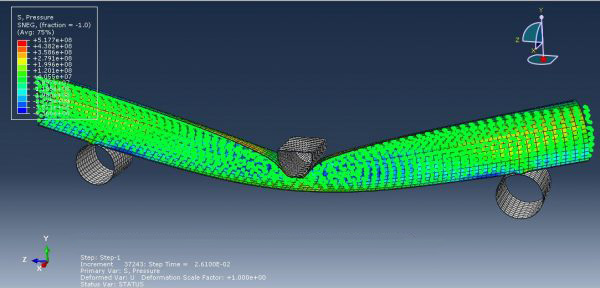
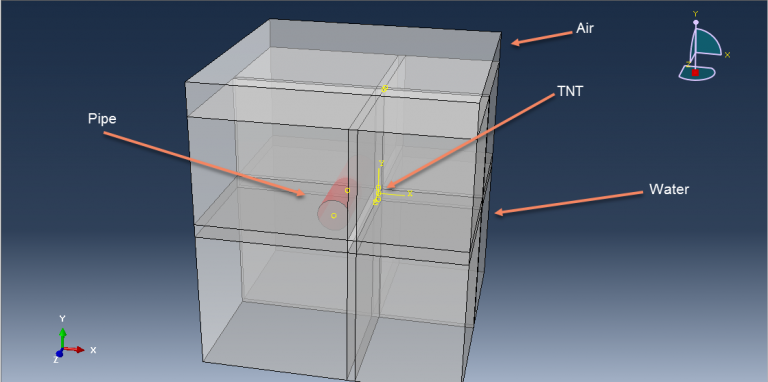
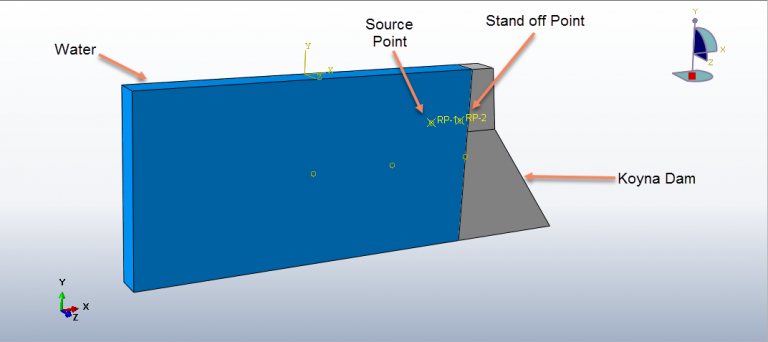
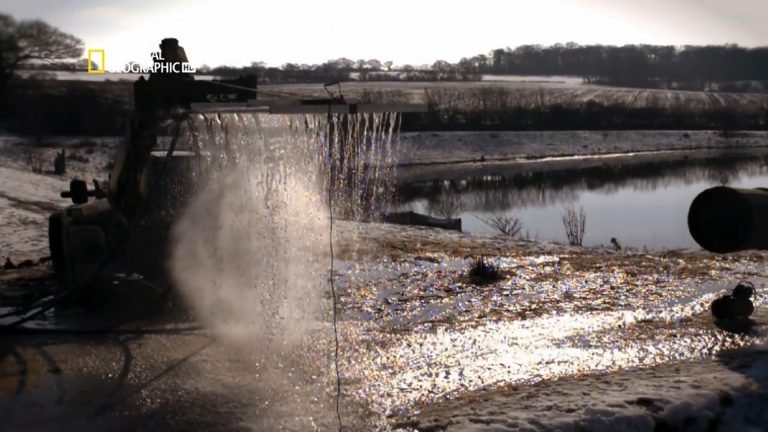
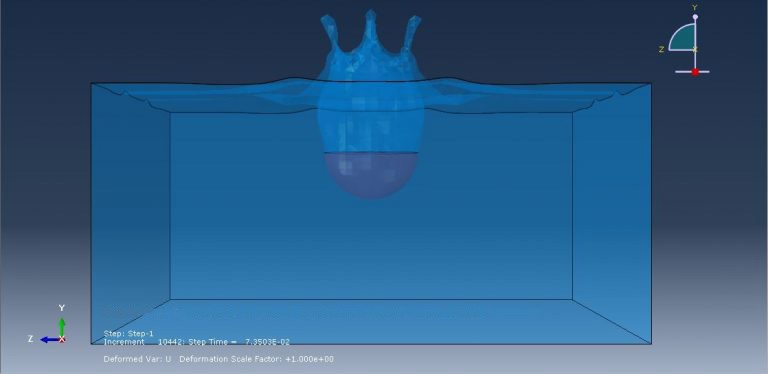
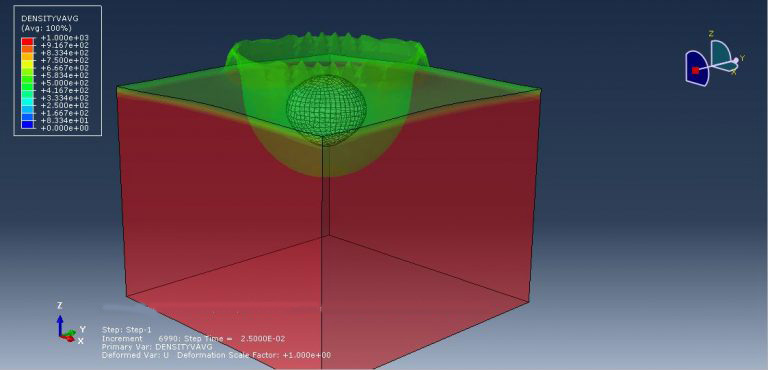
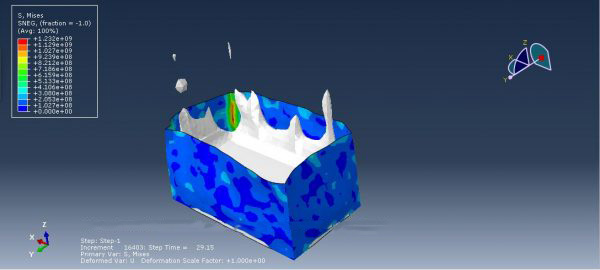


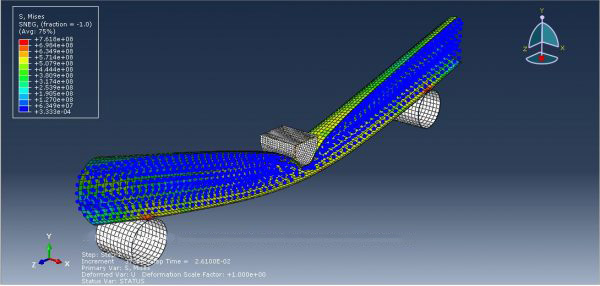

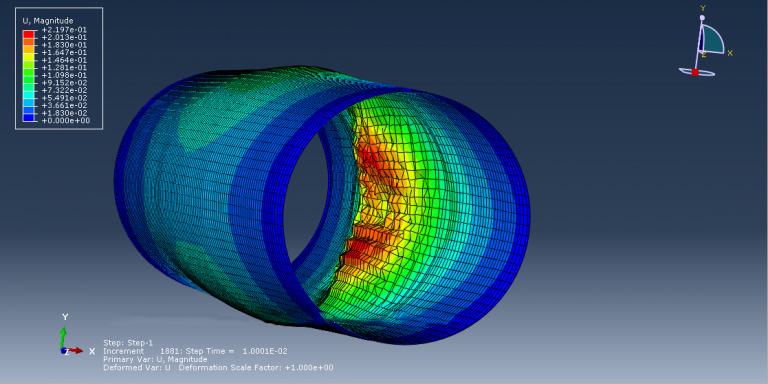
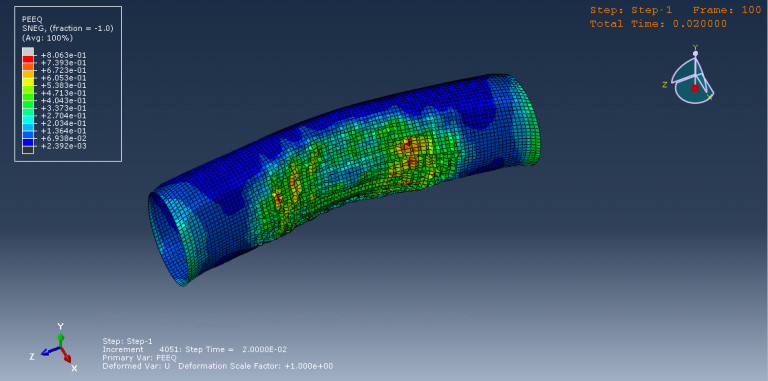

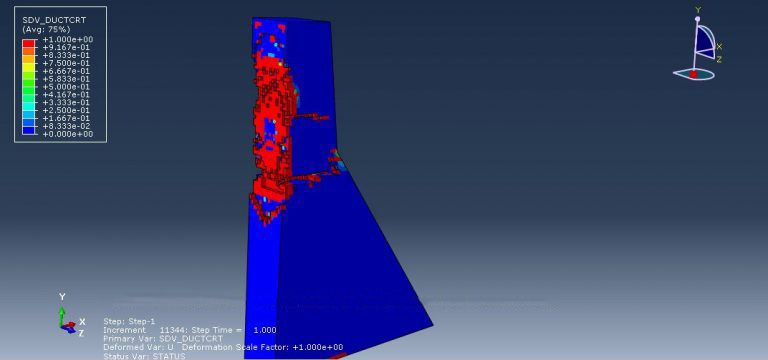
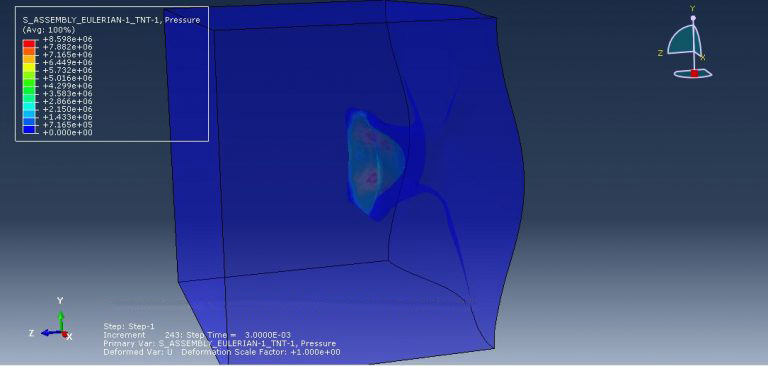
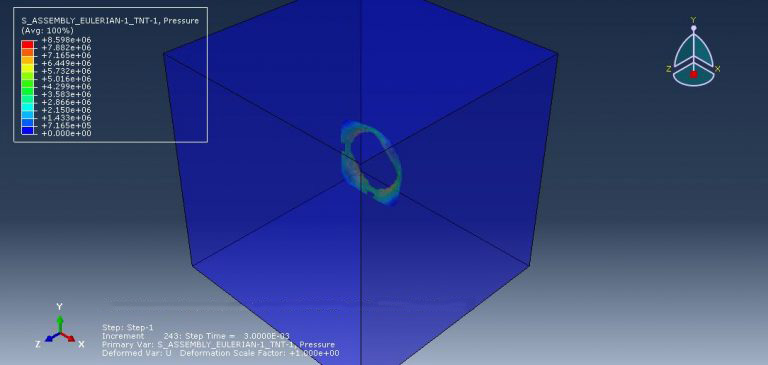
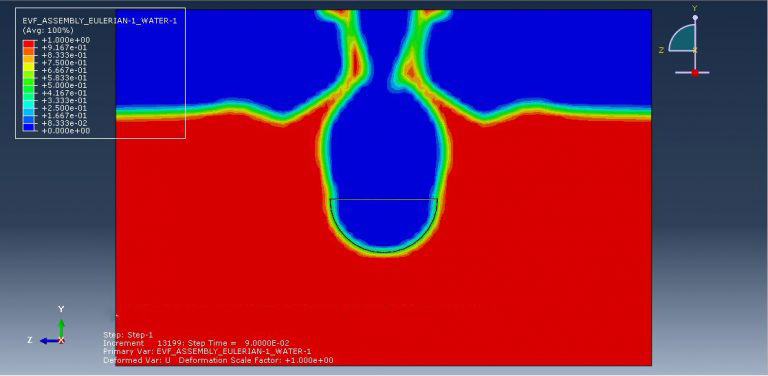
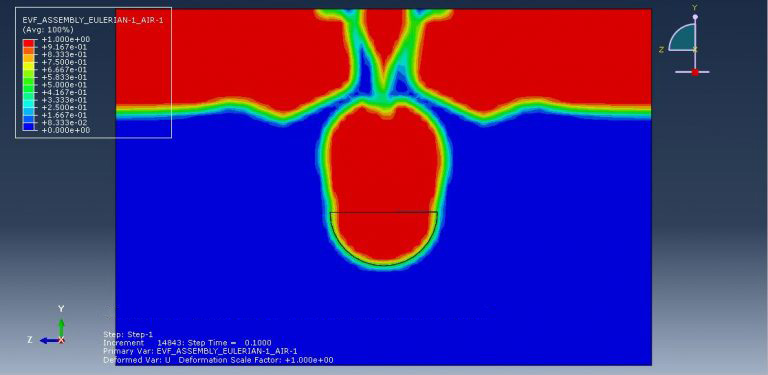
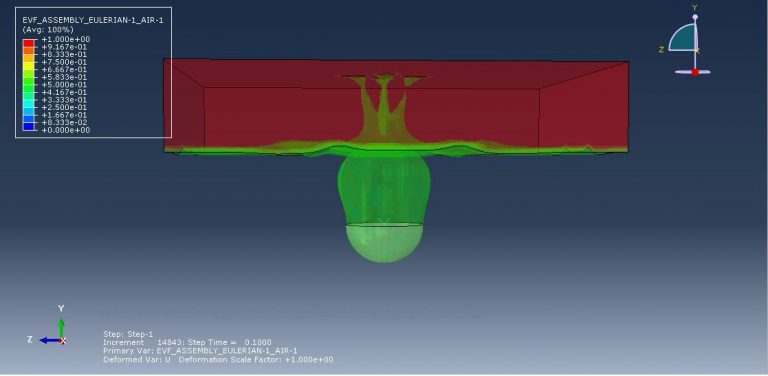
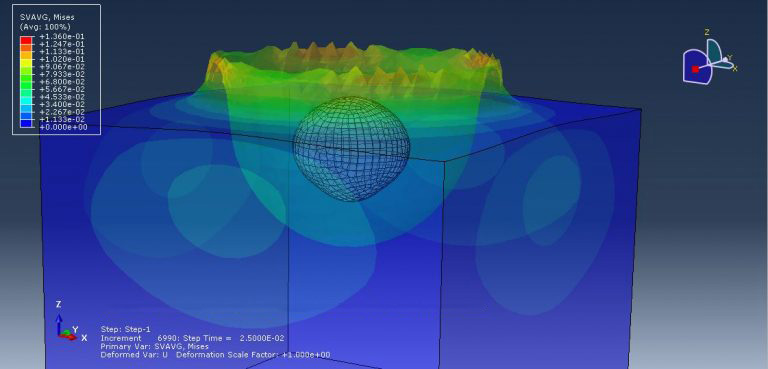
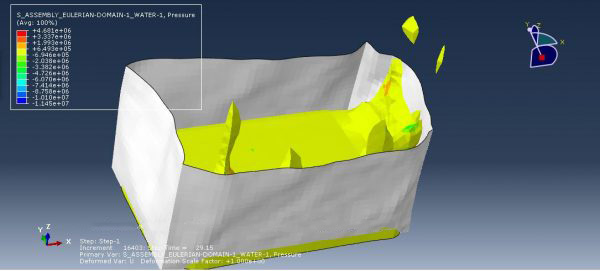
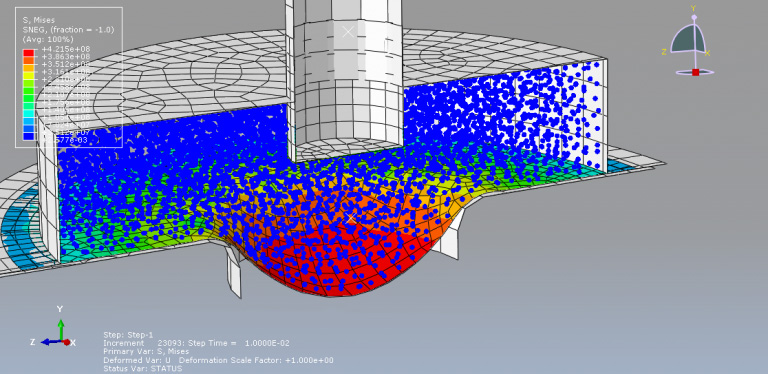


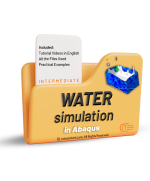
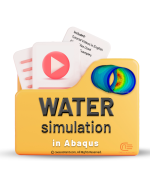


























José –
Hello, I’m interested in your product titled ‘Water Simulation in Abaqus.’ I would like to know if this product provides comprehensive information on methods, parameters, and modeling related to water simulation in Abaqus. Can I learn and perform the entire water simulation process in Abaqus using this product? Thank you.
Experts Of CAE Assistant Group –
yes. it is possible